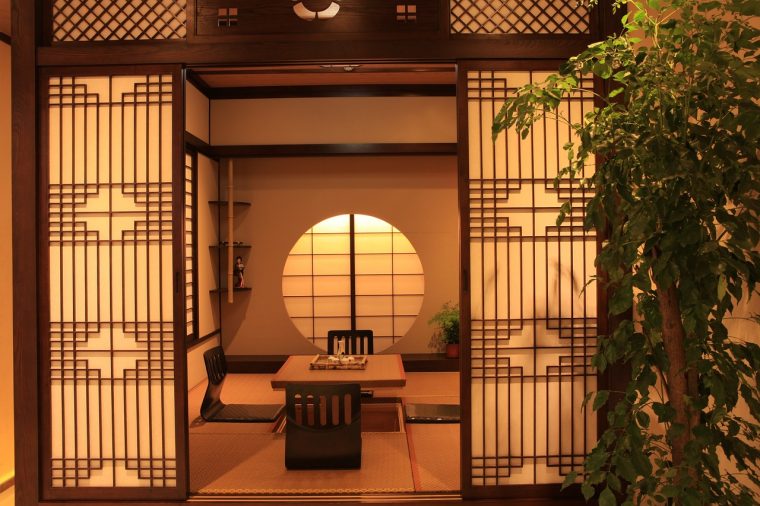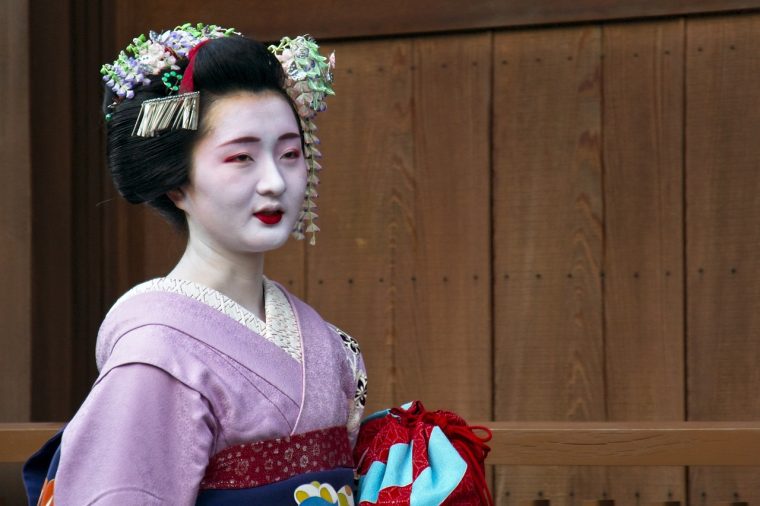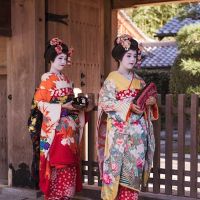Maiko and Ozashiki Asobi: A Unique Kyoto Experience
S-fleage
S-fleage is a Kyoto-based company. We are proud to introduce the charms of Kyoto to the world. We hope this article will help you to experience Kyoto.
Latest posts by S-fleage (see all)
When visiting Kyoto, Japan’s cultural capital, you have the rare opportunity to immerse yourself in one of its most enchanting traditions: Ozashiki Asobi or parlor games, played with Maiko. These games are not just simple pastimes but a delightful fusion of culture, elegance, and playfulness. Engaging in Ozashiki Asobi with Maiko offers a window into the sophisticated world of traditional Japanese entertainment, providing an experience that is as fun as it is culturally enriching.
Contents
Understanding Maiko

A Maiko is an apprentice Geiko (known as Geisha outside Kyoto) who is trained in the traditional Japanese arts, including dance, music, and the art of hospitality. Typically, a Maiko is younger than a Geiko and is instantly recognizable by her colorful kimono, elaborate hairstyle adorned with beautiful hairpins, and her striking white makeup accented with red and black.
The role of a Maiko is to entertain guests through traditional dance performances, musical instruments like the shamisen (a three-stringed lute), and conversation, providing a unique and memorable experience that transcends language barriers.
While both Maiko and Geiko serve as cultural ambassadors of Japan’s traditional arts, they are distinct in their appearance and roles. A Geiko is more experienced, with a more refined style, wearing simpler kimono and less ornate hairpieces. Understanding these differences enhances the appreciation of the artistry and dedication required in this time-honored profession.
What is Ozashiki Asobi?

Ozashiki Asobi refers to a range of traditional parlor games that have been played in Japan for centuries. These games were originally developed as a form of entertainment during gatherings in Ochaya (tea houses) or during private banquets, providing guests with a lively, interactive experience. The games often combine elements of wit, speed, memory, and physical dexterity, requiring both mental agility and a sense of humor.
Playing Ozashiki Asobi with Maiko is not only entertaining but also serves as a cultural exchange, allowing participants to experience a taste of Japanese tradition and hospitality. These games often involve singing, clapping, or quick reflexes and are designed to create a joyful, friendly atmosphere where both guests and Maiko can enjoy themselves together.
Types of Traditional Ozashiki Asobi

1. Konpira Fune Fune
Konpira Fune Fune is a fast-paced hand game that uses a cylindrical container called a “tokkuri no hakama,” which is traditionally used to hold a sake flask.The game is set to a rhythmic chant, with each participant alternately placing their hand or picking up the object on the tray.
The goal is to avoid making a mistake or hesitating; the first to do so loses. The challenge lies in keeping up with the rhythm and maintaining concentration while under the watchful eye of the Maiko. The simplicity of the game, coupled with its rapid tempo, makes it both accessible and thrilling.
2. Tora Tora
In Tora Tora (Tiger Tiger), participants hide behind a screen, and on the cue, they emerge as either a “samurai,” a “old woman,” or a “tiger,” using specific poses. The rules are similar to rock-paper-scissors: the tiger defeats the old woman, the old woman defeats the samurai, and the samurai defeats the tiger.
This game involves quick thinking, dramatic gestures, and often a bit of humor, as participants attempt to outsmart each other. The Maiko lead the game with animated expressions and playful encouragement, making it an enjoyable experience for all.
3. Tosenkyo
Tosenkyo is a traditional fan-tossing game that requires precision and a good sense of aim. Players throw a folding fan toward a target, usually a small wooden platform with a butterfly on it.
The goal is to knock the butterfly onto the platform in such a way as to score points, based on where it lands and the pose it assumes. Tosenkyo requires grace and technique, and the Maiko often provide a demonstration before inviting guests to participate. The game is reminiscent of archery, requiring both focus and finesse.
4. Jin Tori
In Jin Dori (Land-Grabbing), two pairs, each consisting of a man and a woman, stand on separate sheets of newspaper. The pairs face off in a game of rock-paper-scissors, and the losing pair must fold their newspaper in half.
As the newspaper gets smaller, they are allowed to carry each other on their back or shoulders. If any part of their body touches the ground outside the newspaper, they lose the game.
5. Yakyuken
Yakyuken is a playful game where participants sing and dance while playing rock-paper-scissors. The loser of each round takes a drink of alcohol.
The key to this game is to relax and have fun, providing an opportunity for guests to interact with Maiko. The lively atmosphere of Yakyuken often leads to laughter and applause, making it an enjoyable experience for everyone.
Experiencing Ozashiki Asobi

To fully enjoy an Ozashiki Asobi experience, here’s what you can expect and how to prepare:
1. Booking the Experience
Participating in Ozashiki Asobi typically requires a reservation through a ryotei (traditional Japanese restaurant) or an Ochaya. While some of these establishments are exclusive and may require an introduction, there are now many options available for foreign visitors through online platforms or hotels that partner with such venues. It is advisable to book well in advance, especially during peak tourist seasons.
2. Interacting with Maiko
During the session, be open, friendly, and respectful. The Maiko are highly trained in the art of conversation and will do their best to make you feel at ease. Follow their lead in the games, and don’t be afraid to ask questions or laugh at your mistakes – it’s all part of the fun!
3. Observing Cultural Etiquette
Politeness is key in any Japanese setting. Dress appropriately, listen carefully to instructions, and avoid being overly loud or disruptive. Show appreciation by clapping, smiling, and engaging positively with the Maiko. Understanding a few simple Japanese phrases like “Arigatou” (thank you) or “Sumimasen” (excuse me) can go a long way in showing respect.
Embrace the Magic of Ozashiki Asobi

Engaging in Ozashiki Asobi with a Maiko is a rare opportunity to experience an authentic aspect of Japanese culture that is often not accessible to outsiders. It combines tradition, entertainment, and genuine human connection in a way that is both unique and memorable. So, if you find yourself in Kyoto, don’t miss the chance to participate in this delightful experience. You will not only enjoy a playful evening but also leave with a deeper appreciation for Japan’s rich cultural heritage.




